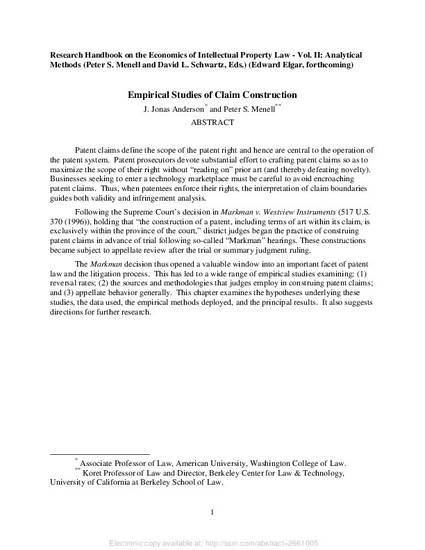
Unpublished Paper
Empirical Studies of Claim Construction
UC Berkeley Public Law Research Paper No. 2661005
(2015)
Abstract
Patent claims define the scope of the patent right and hence are central to the operation of the patent system. Patent prosecutors devote substantial effort to crafting patent claims so as to maximize the scope of their right without “reading on” prior art (and thereby defeating novelty). Businesses seeking to enter a technology marketplace must be careful to avoid encroaching patent claims. Thus, when patentees enforce their rights, the interpretation of claim boundaries guides both validity and infringement analysis. Following the Supreme Court’s decision in Markman v. Westview Instruments (517 U.S. 370 (1996)), holding that “the construction of a patent, including terms of art within its claim, is exclusively within the province of the court,” district judges began the practice of construing patent claims in advance of trial following so-called “Markman” hearings. These constructions became subject to appellate review after the trial or summary judgment ruling. The Markman decision thus opened a valuable window into an important facet of patent law and the litigation process. This has led to a wide range of empirical studies examining: (1) reversal rates; (2) the sources and methodologies that judges employ in construing patent claims; and (3) appellate behavior generally. This chapter examines the hypotheses underlying these studies, the data used, the empirical methods deployed, and the principal results. It also suggests directions for further research.
Keywords
- Patent,
- Empirical Studies,
- Claim Construction,
- Federal Circuit
Disciplines
Publication Date
2015
Citation Information
Jonas Anderson. "Empirical Studies of Claim Construction" UC Berkeley Public Law Research Paper No. 2661005 (2015) Available at: http://works.bepress.com/jonas_anderson/26/
